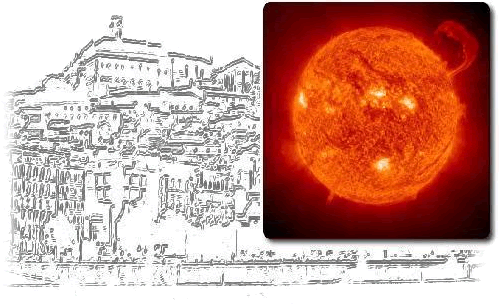|
|
|
|
|
|
|
|
|
|
|
|
|
Manuel Collados, Mr. - PhD. |
|
Instituto de Astrofísica de Canarias, La Laguna, Tenerife, Spain |
|
|
|
|
|
|
|
Session 5 - Invited Speaker |
|
EST: Prospects for the new large-aperture high-resolution European facility |
|
M. Collados, Instituto de Astrofísica de Canarias, La Laguna, Tenerife, Spain |
|
|
|
The European Solar Telescope started its conceptual design in 2008
with the main scientific aim of studying the solar atmosphere, from the deep photosphere up to the high chromosphere, with
excellent spatial resolution and magnetic sensitivity. Its design led to a concept with a polarimetrically compensated design
(to minimise the instrumental polarisation and facilitate the measurement of weak magnetic fields as well as tiny spatial
and temporal variations) together with an ambitious adaptive optics system. To achieve it scientific goals, a set of
instruments will be operated simultaneously to probe the different layers of the solar atmosphere. Under the present
SOLARNET and GREST EU projects, new integral field techniques are under development to facilitate the simultaneous
measurement of the polarised spectrum in a 2D field of view, as well as the study of large etalons that are required
for narrow-band tunable filters operating at a large aperture telescope. In addition, present solar facilities are used
as test benches for new operational procedures to make ground-based data easily accessibe to the whole community.
Among other activities, automatic reduction routines, a prototype data archive with ground-based data linked to Virtual
Observatory tools and a service observing mode are under development. In this talk, the present status of all activities
that are being carried around EST will be described, as well as the future perspectives for this facility. |
|
|
|
|
|
|
|




 









 |



